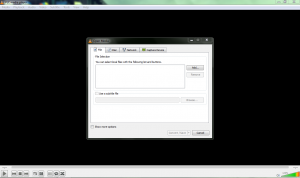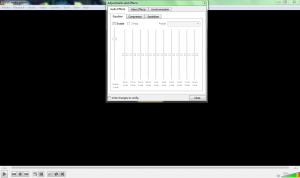Use VLC as a Video Downloader for YouTube
There are many video downloaders available for YouTube video downloads. As a Matter of fact, we even discussed the Top Seven Video Downloaders. VLC has this feature built in. VLC lets you play and download YouTube videos right from its desktop interface. Here’s how: Find a video on YouTube and copy the URL from the address bar. Click on Media > Open Network stream. Paste the YouTube URL and click the Play button in the player. Now, click Tools > Codec Information and at the bottom of the window you will see a Location box. Copy-paste YouTube location information. Copy the long URL in the box and paste this into your browser’s address bar. The browser will now start playing the video file. You can also record clips from YouTube videos as they’re streaming in VLC by pressing the red Record button in the player itself. This isn’t as direct of a rip, but it’s handy if you need to grab a particular clip out of a long video.
Convert Videos to Any Format
Downloading a video is one thing. Getting the video to play on a device of your choice is another thing. VLC also has a pretty decent video converter built in. Here’s how to convert between one file and another: From the toolbar, click on Media > Convert / Save. VLC Convert Video In the Open Media dialog box, click on the Add button and choose the media file for conversion. Then, click on the Convert / Save dropdown > Convert. Open the dropdown menu for Profile and select the file format that you would like to convert your file to. You can also click on the gear icon next to it and edit the chosen profile. Pick a profile and start conversion. Click on Browse and select a location to save the converted file. Then, click on Start to begin the conversion and monitor its progress in the bar below.
Related Article: Top 7 Video Conversion software for PC
VLC as a Graphic Equalizer for Your Music
VLC is a cross-platform standalone media player and brings full audio effects with playlist support. VLC not only displays cover art but also has a good graphic equalizer inside it. Display it with the shortcut keystrokes Ctrl + E (or go to Tools > Effects and Filters > Audio Effects). Adjust the sound quality with the available presets, or fine-tune it with the Equalizer, Compressor, and Stabilizer tabs.
Activate Audio Normalization to Protect Your Ears
The general audio settings for the VLC Player are located under Preferences. One of the key features called Audio Normalization helps to optimize the volume of any media by a fixed amount and improve the sound quality. Go to Tools > Preferences > Audio > Enable Normalize volume to. The value you set here will help to adjust the decibel levels of dialog, music, explosions, gunshots etc. in the movies you watch. Restart VLC after enabling the setting. It is advisable that you configure this immediately after you download and install the VLC player. It will make your audio sound better.
Play Internet Radio and Podcasts in VLC
The VLC Player can fill all your audio needs as it can not only stream radio but also play podcasts. Launch VLC and open the Playlist sidebar. Under Internet, you can browse through the two radio servers: Jamendo and Icecast, and choose a station of your choice by clicking on it. Also, make sure the Playlist view mode is set to List (Go to View > Playlist View Mode > List). VLC – Internet Radio If your favorite internet radio station is not on the list, use the station’s URL to stream it via VLC. Go to Media > Open Network Stream Enter the URL and press Play in order to begin listening. And to play podcasts in VLC: You can manage your favorite podcasts using the same Playlist interface. Go to Playlist and under the Internet section, select Podcasts. As soon your cursor is over the Podcasts section, click the plus sign. Copy and paste the RSS feed URL of the podcast you wish to listen and click on OK. The podcast will be added to the sidebar and you can pick the episode you want to listen to.
Loop a Section of a Video or Audio File
Most media players can loop an entire video or audio. With VLC, you have the added advantage of looping any specific section of a media file. Open the video or audio file with VLC. Go to View > Advanced Controls. Now, a few more buttons will be displayed above the normal play and stop controls. To start the loop from a specific part of the video, move the playhead to the part where you want the loop to start (Point A). Click the loop button once. The “A” mark on the button will turn red. To finish the loop, take the video to the endpoint and click on the same button again. You will see both the A and B points of the button are red. Set VLC Loop Now play the video and the section will loop. Click the loop button once again if you want to switch it off. This is a handy feature when you want to review a how-to video or hear an audio file over and over to get it right.
Add Features With VLC Add-Ons and Extensions
If you are looking for added functionality then there’s an entire catalog of add-ons you can install alongside the default VLC settings. VLC has a huge open-source community behind it and they have helped create extensions, skins, playlist parsers, and other assorted tools. These extensions will help you add more “secret” features to the player like tools which will help you search for subtitles from the player itself. Extensions may also work in macOS and Linux, so do doublecheck the instructions on the add-on’s page. Visit the VLC add-ons page and browse through the two views—Top or Latest. Click the Download button on the add-ons page and download the ZIP file. Extract the file. (VLC add-ons have the LUA extension.) On Windows, place the .lua files in this Windows directory: C:\Users\NAME\AppData\Roaming\vlc\lua\extensions folder. Restart VLC. You can access all your installed extensions from the View menu. Some of the better extensions to consider include:
VLCSub Resume Media Moments’ Tracker Intro and Credits Skipper TuneIn Radio Info Crawler SyncPlay
VLC is easily one of the most popular media players. It has a wide range of features that you might not have known it could do. These features have been explained above and will help you better your experience with VLC.





